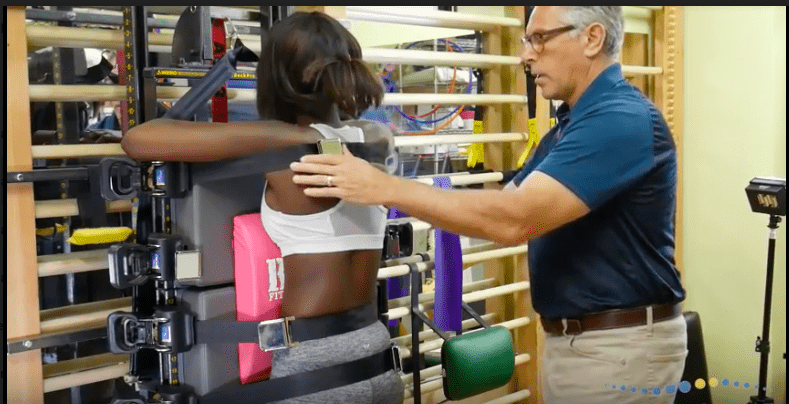February 28, 2014
New Study Suggests Lowering Threshold for Scoliosis Treatment to 20 degrees
OBJECT
The identification of Chiari malformations Type I (CM-Is) has increased in recent years, commonly during MR imaging for evaluation of a possible cause of scoliosis. The treatment of this abnormality remains controversial, and the expected success of treatment is unclear. The goal of the present study is to evaluate the effects of a craniotomy for CM-I decompression on scoliosis in children and adolescents.
METHODS
The authors conducted a 10-year retrospective review of pediatric patients who were found to have a CM-I during evaluation for scoliosis. Seventy-nine patients were identified, ranging in age from 6 months to 18 years (median 12 years). There were 42 girls (54%) and 37 boys (46%). All were noted on MR imaging to have hydrosyringomyelia of the spinal cord. Forty-nine patients had curvatures less than 20° prior to treatment. The other 30 patients had curves ranging from 25° to 80° and underwent orthopedic follow-up and treatment. None of these patients were referred for specific neurological complaints, but 12 (16%) had neurological signs on physical examination. All were treated with a craniocervical decompression in a standard fashion. Follow-up ranged from 6 to 93 months with a median of 35 months. Magnetic resonance images obtained at 6 months postoperatively and serial standing anteroposterior spine radiographs were used to evaluate outcomes.
RESULTS
On the MR images obtained 6 months postoperatively, 70 patients (89%) had a significant reduction in the syrinx with an associated ascent of the cerebellar tonsils. Persistent large syringes were treated with reoperation in 6 patients, and shunts were inserted for hydrocephalus in 2 patients. None of the 49 patients with curves less than 20° had progression of their curvature postoperatively. Of the 30 patients with curves greater than 25°, 9 had no change in the scoliosis or had a reduction in curve magnitude after Chiari decompression. This group required no further therapy and was effectively treated by Chiari decompression alone. Twenty-one patients required further scoliosis treatment after Chiari decompression; 12 required orthotic treatment, 11 received spinal instrumentation and fusion surgery, and 2 received orthoses followed by fusion and instrumentation. The severity of the curvature beyond 20° did not predict the need for spinal surgery.
CONCLUSIONS
This large series reports on the efficacy of treatment for scoliosis associated with a CM-I and syrinx in children. A CM-I decompression alone was adequate treatment for mild scoliosis of less than 20°. Patients with scoliosis greater than 20° required bracing and/or spinal fusion surgery 70% of the time in addition to the CM-I decompression.

0 Comments
Leave A Comment